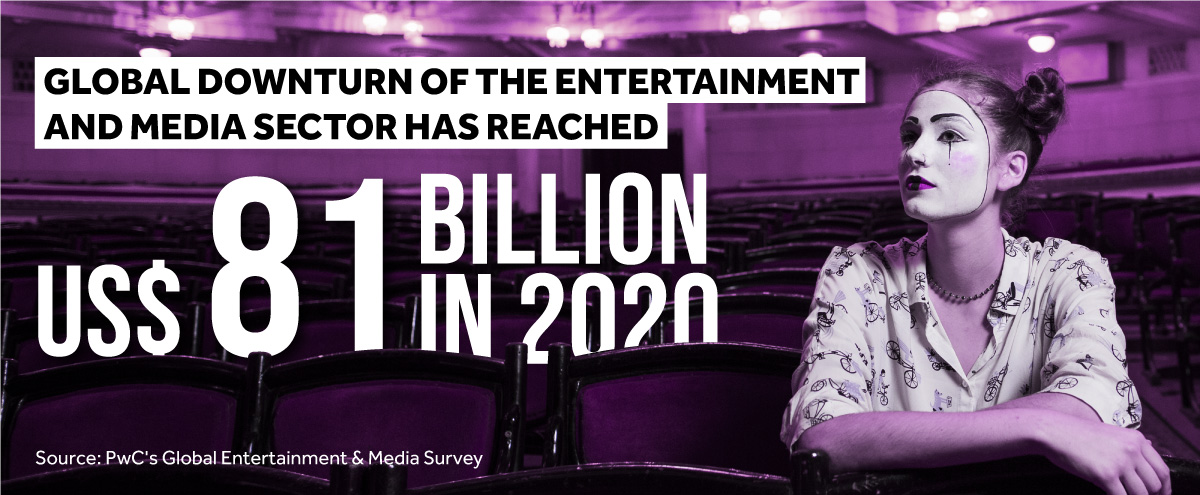Data in the Entertainment Industry: Discover the memorable experiences they provide
 Zoox Smart Data - 5 de August de 2022.
Zoox Smart Data - 5 de August de 2022.
In recent years, driven by the Covid-19 pandemic, the entertainment industry has undergone several changes. More connectivity, new customer behaviors, and consumer empowerment have been major drivers of these changes.
While challenging, the immense array of data generated by this increased connectivity can provide revenue growth for companies that incorporate a data-driven culture. In large events and music festivals, using a data-driven strategy is the way to increase assertiveness in decision making and investments.
Having a 360° view of the user in mind makes it possible to select the attractions and sponsors more in tune with the public's desires, enhances the experiences and other entertainment activities offered.
Consumer behavior in the post-pandemic period
Unfortunately, the entertainment industry was one of the segments most directly affected by the Covid-19 pandemic. Even though the growth of domestic options such as streaming video, social media, and gaming helped soften the impact, the lockdowns caused the industry's global revenues to shrink by $81 billion in 2020, an unprecedented drop and one that primarily impacted movie theaters, live shows, and trade shows, according to PwC's Global Entertainment and Media Survey.

Going forward, this period has accelerated behavioral trends in years, greatly amplifying the importance of connectivity and the empowerment of the consumer, who now expects content to come to them with quality, extreme personalization, and also deliver an exceptional experience.
For streaming video, for example, which will make $71 billion in 2021, according to the Motion Pictures Association, maintaining the audience gained during social isolation will not be an easy task.
A survey conducted by KPMG (in portuguese only) analyzed the main behavior trends of consumers of these platforms and revealed that the main criteria for choosing which service to subscribe to are easy access (highlighted by 46% of users), the ability of personalized suggestions by the algorithm (fundamental for 43%), and the wide range of options in the catalog (considered important by 37%).
In addition, TVs and smartphones are the favorite devices to watch content, used by 51% and 30% of respondents, respectively. Thus, platforms with poorly functional interfaces on these devices are likely to lose subscribers over time.
In this context, even digital giants like Netflix and Amazon will face competition among themselves as well as with smaller platforms and independent content creators on social media, who have been empowered by taking an important place as users' companions during the isolation.
Cases like these illustrate the need for all media and entertainment businesses to have a deep understanding of data and trends to quickly define their business strategies, warns PwC in its research.
- Learn more: Rock in Rio: the potential of data intelligence in the entertainment industry
- Read also: Big Data: 4 movies to dive into the world of data
Data Analysis and the 360º user view
Although challenging, the moment also brings the opportunity for the entertainment industry to get to know the media consumer in depth from the gigantic universe of data about them generated by their social networks, streaming consumption patterns, and other points of contact.
The solid growth of the gaming market, which is expected to make $196 billion by 2022 according to consulting firm Newzoo, and the advancement of metaverse construction have drawn the attention of several personalities and brands to this world. In Battle Royale Fortnite, for example, the entire business model is based on microtransactions for skins and cosmetic items that allow players to develop avatars with unique and personalized looks for their matches.
Thus, the game has become a gigantic source of data about the gamer public, and the 360º view of each user has allowed the development of interesting strategies for the music market, such as virtual megashows on the platform with major artists like singer Ariana Grande and rapper Travis Scott, current record holder for spectators at events in this universe, totaling 28 million users over five performances held in 2020.
On the other hand, the e-sports universe keeps betting more and more on real-world experiences for its audience, providing fans of several game modalities with the thrill of cheering directly at the stadium.
Based on data analysis regarding the solidity of the player and spectator audience of the shooting game Counter Strike:GO in Brazil, Valve, the game's creator, and ESL, organizer of the competitions, chose the Jeunesse Arena, in Rio de Janeiro's Olympic Park, as the venue for the next world championship, a decision that proved to be extremely assertive with tickets sold out just an hour after the start of sales.
Data strategy in music festivals
Today, when one talks about the use of data applied to the market to generate better consumer experiences, what comes first to mind are more traditional environments, such as insurance companies, banks and e-commerce. Hardly a big music festival is considered. But this, for sure, is the future.
In the same way that e-commerces use data strategy to indicate products that are aligned with a user's consumption profile, the entertainment industry can use data analysis to indicate a specific booth for each person to visit during an event, for example.
Besides offering better experiences to the public, the insights obtained through data can help sponsors develop strategies, mapping better opportunities for communication, advertising, and brand actions.
Therefore, the analysis of data generated at festivals helps in the creation of a 360° Vision of the public, becoming a strong ally that adds more assertiveness to the festival, once the event knows its public better. Thus, it can define from the artists to be casted to the other entertainment activities offered in the space, such as the Ferris wheel of the City of Rock.
Speaking of knowing your audience, the customer experience has never been more in focus. With increasingly empowered consumers, creating unique and memorable experiences continues to be an imperative in brand actions. In this sense, there is a big challenge for companies in the entertainment and events industry. According to a Kissmetrics survey, 82% of marketers are unable to quantify and qualify the interactions of their event attendees.
In contrast, the music segment is boosted after the post-pandemic period. Also according to PwC research, global music, radio, and podcast revenues are projected to grow 8.9% CAGR, from $78.1 billion in 2020 to $119.4 billion in 2025, spurred by the expected recovery of live events.
With the changes that have occurred in recent years and those yet to come, focusing on the needs and expectations of their customers should be the main commitment of major festivals and events.






Comments